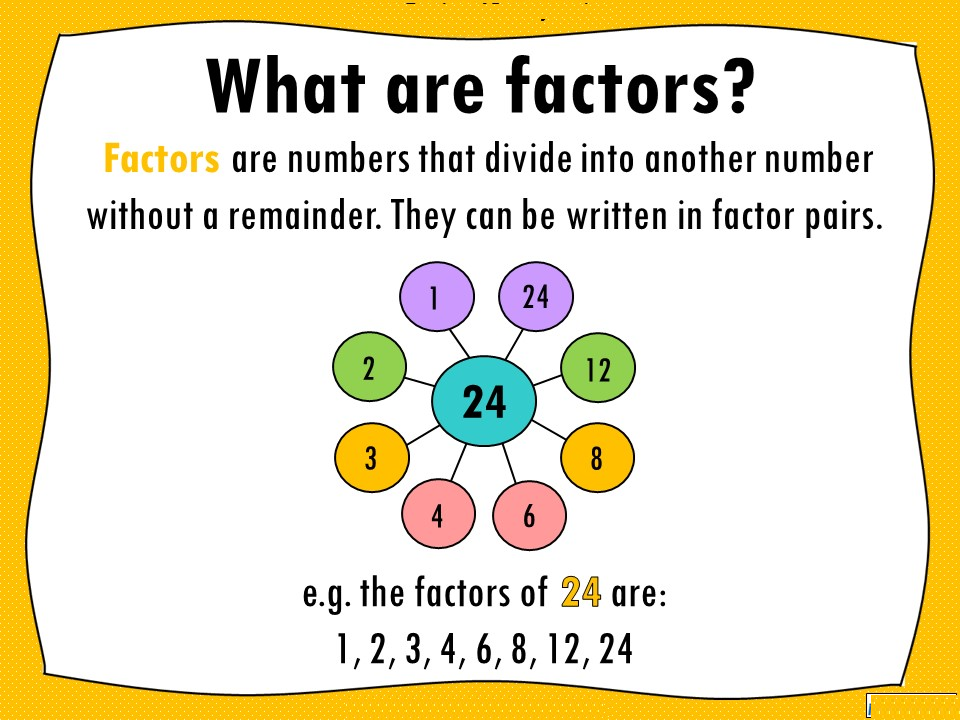In the ever-evolving landscape of search engine optimization (SEO), understanding how Google interacts with your website is paramount for driving organic traffic and ensuring visibility in search results. The Search Console Coverage Report, often referred to interchangeably with the Page Indexing Report in modern contexts, serves as a critical diagnostic tool provided by Google Search Console (GSC). This report offers webmasters, SEO professionals, and site owners a comprehensive overview of how Google discovers, crawls, and indexes the pages on their websites. By revealing the indexing status of URLs, it highlights potential roadblocks that could prevent content from appearing in Google Search, Google Discover, or other Google services.
At its core, the report categorizes URLs based on whether they are successfully indexed or not, providing insights into errors, exclusions, and warnings that might affect a site’s performance. For instance, if Google encounters issues during crawling—such as server errors or blocked resources—it flags these in the report, allowing users to take corrective action. This is especially vital in 2025, amid ongoing algorithm updates and increased scrutiny on content quality, where maintaining a healthy indexing profile can directly impact rankings and user reach.
Why does this matter? Indexing is the foundation of search visibility. Without proper indexing, even the most valuable content remains invisible to users querying related terms. According to Google’s own documentation, the report helps identify why certain pages aren’t making it into the index, whether due to technical glitches, duplicate content, or intentional exclusions like noindex tags. In an era where core updates emphasize helpful content, leveraging this report aligns with best practices for creating authoritative, user-focused sites. It’s not just about fixing errors; it’s about optimizing the entire crawling and indexing pipeline to support long-term SEO strategies.
This article delves deep into the intricacies of the Search Console Coverage Report, exploring its components, common pitfalls, and actionable fixes. Whether you’re a beginner managing a small blog or an experienced developer overseeing a large e-commerce platform, mastering this tool can elevate your site’s search presence. We’ll cover everything from basic navigation to advanced troubleshooting, drawing on real-world examples and the latest updates as of September 2025.
The Evolution of Google’s Indexing Reports
Google Search Console has undergone significant transformations since its inception as Google Webmaster Tools. The original Index Coverage Report, introduced around 2018, was designed to give users visibility into the indexing process, replacing older, less intuitive tools. It broke down pages into four main categories: Error, Valid with Warnings, Valid, and Excluded. This structure allowed for quick identification of problematic URLs, such as those with crawl errors or those deliberately kept out of the index.
By 2021, Google rebranded it to the Page Indexing Report to better reflect its focus on indexing rather than broad “coverage.” This shift emphasized the binary nature of indexing: pages are either indexed (available in search results) or not indexed (due to errors or exclusions). In 2025, amid a series of core updates and an “indexing purge” in May-June, the report has become even more crucial. During this period, Google removed a substantial number of low-quality or redundant pages from its index, affecting sites worldwide and prompting increased reliance on GSC for monitoring. This purge was not a glitch but a deliberate enhancement to prioritize high-value content, aligning with Google’s emphasis on Expertise, Authoritativeness, and Trustworthiness (E-A-T) in its algorithms.
Recent updates include deeper integration with the Search Console Insights report, launched in June 2025, which combines performance data with indexing metrics for a holistic view. Additionally, real-time issue tracking has improved, allowing faster detection of drops in indexed pages. For large sites, this means better handling of crawl budgets, where Google allocates limited resources to discover new content. Understanding this evolution helps contextualize why some older guides still reference “Coverage” while current interfaces use “Indexing”—the functionality remains robust, but the terminology has refined to match SEO best practices.
How to Access and Navigate the Search Console Coverage Report
Getting started with the report is straightforward, but it requires proper setup in Google Search Console. First, verify your site ownership through methods like HTML file upload, DNS record, or Google Analytics integration. Once verified, log into GSC at search.google.com/search-console and select your property from the dropdown menu.
The Page Indexing Report is located under the “Indexing” section in the left-hand navigation. Upon opening, you’ll see a summary dashboard featuring a line graph tracking indexed and non-indexed pages over time—typically the last 90 days, with options to export data for longer analysis. Below the graph, key metrics display: total indexed pages (in green) and non-indexed pages (in gray), broken down by reasons.
Navigation is intuitive yet powerful. Click on any row in the “Why pages aren’t indexed” table to drill down into details, revealing up to 1,000 example URLs affected by that issue. Each details page includes a trend graph for the specific problem and tools for live inspection via the URL Inspection tool. Filters allow viewing by sitemap status: “All known pages,” “All submitted pages,” or specific sitemaps, which is invaluable for sites with multiple XML sitemaps.
For advanced users, sharing report snapshots is possible by generating a temporary link, ideal for collaborating with teams. Export options include CSV or Google Sheets integration, enabling data analysis in tools like Excel or Python for spotting patterns, such as seasonal drops in indexing due to site changes. Remember, the report updates daily but may lag for very large sites, with some users reporting delays since January 2025. Regular monitoring—weekly for small sites, daily for enterprises—ensures proactive management of indexing health.
Breaking Down the Key Sections of the Report
The heart of the Search Console Coverage Report lies in its categorization of URLs, providing a clear snapshot of your site’s indexing health. Let’s explore each section in detail, using the current Page Indexing framework while noting legacy terms for clarity.
Indexed Pages (Formerly “Valid”)
These are the URLs Google has successfully crawled, processed, and added to its index. Appearing in green on the summary, they represent pages eligible for search results. The count here should align closely with your site’s important content; a healthy site might have 80-90% of its core pages indexed. However, not all indexed pages rank well—factors like content quality and backlinks play roles beyond indexing.
To view details, click “View data about indexed pages.” This reveals historical trends and example URLs. If you notice a sudden drop, it could stem from deindexing during updates, like the 2025 purge where Google prioritized unique, helpful content. Use this section to confirm that canonical pages (your preferred versions) are indexed, while duplicates are excluded.
Not Indexed Pages (Encompassing Errors, Warnings, and Exclusions)
Non-indexed URLs, shown in gray, are further divided into reasons why they’re not in the index. This is where the report shines for troubleshooting.
- Errors: Critical issues preventing indexing. Common ones include:
- Server Error (5xx): Googlebot couldn’t access the page due to server issues. Fix by checking hosting stability and monitoring logs.
- Redirect Error: Faulty redirects, like chains or loops. Ensure 301 redirects point correctly.
- Submitted URL Blocked by robots.txt: Pages listed in sitemaps but disallowed in robots.txt. Update robots.txt to allow crawling.
- Submitted URL Seems to Be a Soft 404: Pages returning 200 OK but with no content. Return proper 404 codes for dead pages.
- Valid with Warnings: Pages indexed but with potential issues, such as missing structured data or mobile usability problems. While not blocking indexing, addressing these can improve performance in rich results.
- Excluded: Intentionally or unintentionally not indexed. This isn’t always bad—e.g., admin pages shouldn’t be indexed. Sub-reasons include:
- Blocked by robots.txt: Legitimate for private areas.
- Noindex Tag: Meta tag preventing indexing; useful for low-value pages.
- Duplicate Without User-Selected Canonical: Google chose a different canonical; specify yours with rel=canonical.
- Crawled – Currently Not Indexed: Google crawled but decided not to index, often due to low quality or duplication.
- Discovered – Currently Not Indexed: Known but not yet crawled, common for new sites.
- Page with Redirect: Redirected pages aren’t indexed; the target might be.
- Alternate Page with Proper Canonical Tag: Non-canonical versions excluded in favor of the primary.
- Not Found (404): Missing pages; clean up or redirect.
- Soft 404: As above, misleading status codes.
- Unauthorized Request (401): Login-required pages; exclude if not public.
- Page Removed Because of Legal Complaint: Rare, due to DMCA takedowns.
- Blocked Due to Access Forbidden (403): Permission issues; grant access to Googlebot.
- Blocked by Page Removal Tool: Manual removals via GSC.
Each reason comes with documentation links in GSC, explaining causes and fixes. For example, if “Crawled – Currently Not Indexed” spikes, it might indicate content not meeting Google’s quality thresholds post-2025 updates. Analyzing examples helps pinpoint patterns, like parameter-heavy URLs causing duplicates.
The report also includes a “Page Experience” section, tying into Core Web Vitals, recommending improvements for better indexing and ranking potential.
Common Issues in the Coverage Report and How to Fix Them
Encountering issues in the Search Console Coverage Report is common, even for well-optimized sites. Below, we detail high-frequency problems based on SEO community reports and Google’s data, along with step-by-step fixes. These draw from extensive analysis of sites affected by recent updates, ensuring practical, experience-backed advice.
1. Drop in Total Indexed Pages
A sudden decline often alarms users, especially post the May 2025 indexing crisis where Google purged low-quality content. Causes: Algorithmic deindexing, site migrations, or crawl budget exhaustion for large sites.
How to Fix:
- Audit your content for quality: Remove or improve thin, duplicated, or outdated pages.
- Submit updated sitemaps via GSC’s Sitemaps tool.
- Request recrawls for key pages using the URL Inspection tool.
- Monitor for recovery; it may take weeks as Google re-evaluates.
Real-world example: E-commerce sites with thousands of product pages saw drops if variants weren’t properly canonicalized.
2. Server Error (5xx)
This error signals temporary server failures during Googlebot’s visit.
How to Fix:
- Check server logs for downtime spikes.
- Optimize hosting: Upgrade to reliable providers like AWS or Google Cloud.
- Implement monitoring tools like UptimeRobot.
- Validate fixes in GSC; expect resolution within days if consistent.
3. Redirect Error
Occurs with broken redirect chains or infinite loops.
How to Fix:
- Use tools like Screaming Frog to crawl and identify faulty redirects.
- Standardize to 301 permanent redirects.
- Update .htaccess or server configs accordingly.
- For HTTPS migrations, ensure all variants redirect properly.
4. Blocked by robots.txt
Pages submitted in sitemaps but disallowed.
How to Fix:
- Edit robots.txt to allow specific paths (e.g., User-agent: * Allow: /blog/).
- Test with GSC’s robots.txt Tester.
- Resubmit sitemap after changes.
5. Duplicate Without User-Selected Canonical
Google selects a different page as canonical.
How to Fix:
- Add rel=canonical tags to preferred versions.
- Use 301 redirects for duplicates.
- Consolidate content to avoid similarity.
- In GSC, validate and monitor for reindexing.
6. Crawled – Currently Not Indexed
Google crawled but opted not to index, often due to perceived low value.
How to Fix:
- Enhance content: Add depth, originality, and user value.
- Improve internal linking to boost authority.
- Reduce crawl depth for important pages.
- During 2025’s purge, focusing on E-E-A-T (Experience, Expertise, Authoritativeness, Trustworthiness) helped many sites recover.
7. Not Found (404)
Missing pages Google once knew about.
How to Fix:
- Redirect valuable 404s to similar content.
- Update internal links.
- Use GSC to export and prioritize high-traffic errors.
8. Soft 404
Pages that look empty but return 200 status.
How to Fix:
- Configure servers to return 404 for truly missing content.
- Add meaningful content or noindex tags.
9. Mobile Usability Issues (Tied to Warnings)
Though not blocking, affects indexing indirectly.
How to Fix:
- Test with GSC’s Mobile-Friendly Test.
- Implement responsive design.
- Optimize for Core Web Vitals.
10. High Volume of Excluded Pages
If exclusions outnumber indexed, it signals discovery issues.
How to Fix:
- Build backlinks and internal links.
- Submit comprehensive sitemaps.
- For new sites, patience is key—indexing can take time.
Additional issues like 403/401 errors require granting Googlebot access, while legal removals need DMCA resolution. For large sites, crawl budget optimization—prioritizing fresh content and reducing bloat—prevents many problems. Always validate fixes in GSC: Fix instances, click “Validate Fix,” and track progress, which can take up to two weeks.
In practice, I’ve seen sites recover 20-30% of lost traffic by addressing these systematically, combining GSC data with analytics tools like Google Analytics 4 for correlation.
Best Practices for Maintaining Healthy Indexing
To prevent issues proactively, adopt these strategies rooted in Google’s guidelines:
- Regular Audits: Check the report weekly, exporting data for trend analysis.
- Sitemap Management: Keep sitemaps updated and error-free; use dynamic generation for large sites.
- Content Quality Focus: Prioritize original, in-depth content to align with post-2025 standards.
- Technical SEO Fundamentals: Ensure fast loading, mobile optimization, and secure HTTPS.
- Integration with Other Tools: Combine GSC with SEMrush or Ahrefs for broader insights.
- Stay Updated: Monitor Google’s Search Central Blog for changes, like the new Insights report.
By embedding these into your workflow, you’ll not only fix current issues but build resilience against future updates.
Answering High-Volume Questions About the Coverage Report
1.What Does “Crawled – Currently Not Indexed” Mean?
It indicates Google visited the page but chose not to index it, often due to duplication or low quality. Improve uniqueness and request reindexing.
2.How Long Does It Take for Changes to Reflect in the Report?
Typically 1-7 days, but up to weeks for large changes or during backlogs like January 2025 delays.
3.Why Are My Pages Excluded Even If They’re Important?
Check for noindex tags, robots.txt blocks, or canonical issues. Use site: searches to verify.
4.Can I Force Google to Index a Page?
Use the URL Inspection tool to request indexing, but approval isn’t guaranteed.
5.What’s the Difference Between Indexed and Discoverable?
Indexed means in the database; discoverable adds visibility in features like Discover.
6.How Do I Fix a Sudden Drop After a Core Update?
Audit for quality, remove spam, and enhance E-E-A-T signals.
7.Is the Report Accurate for Very Large Sites?
Mostly, but crawl budget limits may cause underreporting; use logs for full picture.
8.What If the Report Shows More URLs Than My Site Has?
This includes discovered URLs via links or sitemaps, even if not yours—ignore irrelevants.
9.How to Use the Report for SEO Audits?
Cross-reference with performance data to prioritize high-traffic fixes.
10.Are There Alternatives to GSC for Indexing Checks?
Tools like Bing Webmaster Tools or third-party crawlers, but GSC is the gold standard.
Conclusion
The Search Console Coverage Report, now evolved into the Page Indexing Report, remains an indispensable asset for SEO success in 2025. By understanding its sections, addressing common issues, and following best practices, you can ensure your content reaches its audience effectively. Regular engagement with this tool not only resolves technical hurdles but also aligns your site with Google’s vision for a helpful web. Dive in, monitor diligently, and watch your search presence thrive.
Saad Raza is an SEO specialist with 7+ years of experience in driving organic growth and improving search rankings. Skilled in data-driven strategies, keyword research, content optimization, and technical SEO, he helps businesses boost online visibility and achieve sustainable results. Passionate about staying ahead of industry trends, Saad delivers measurable success for his clients.





